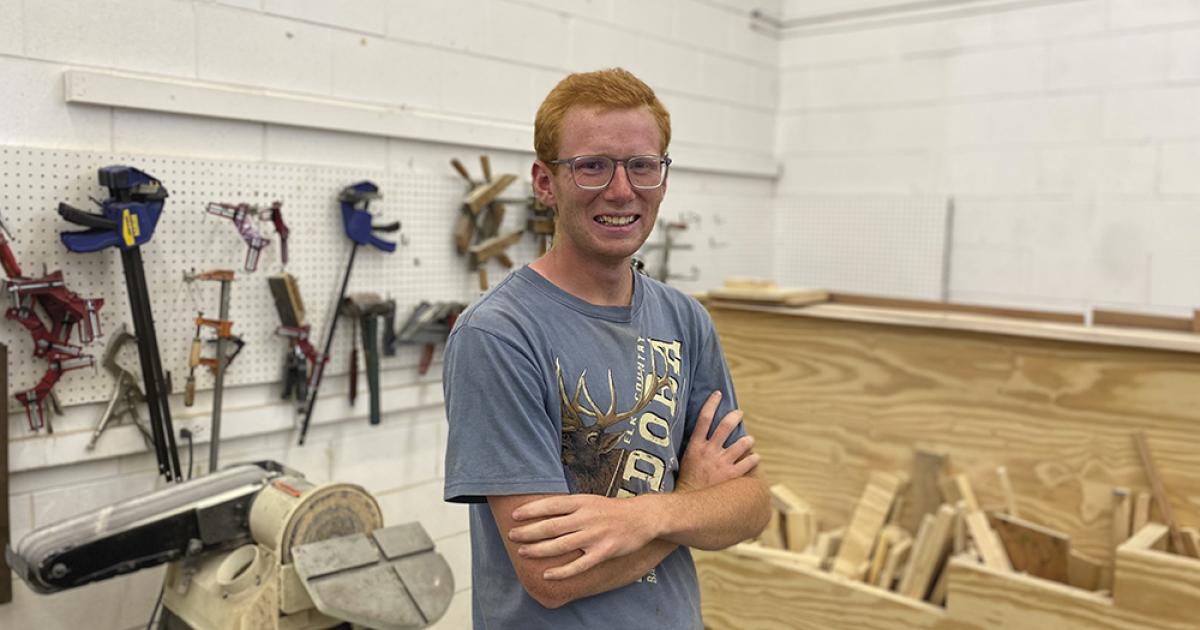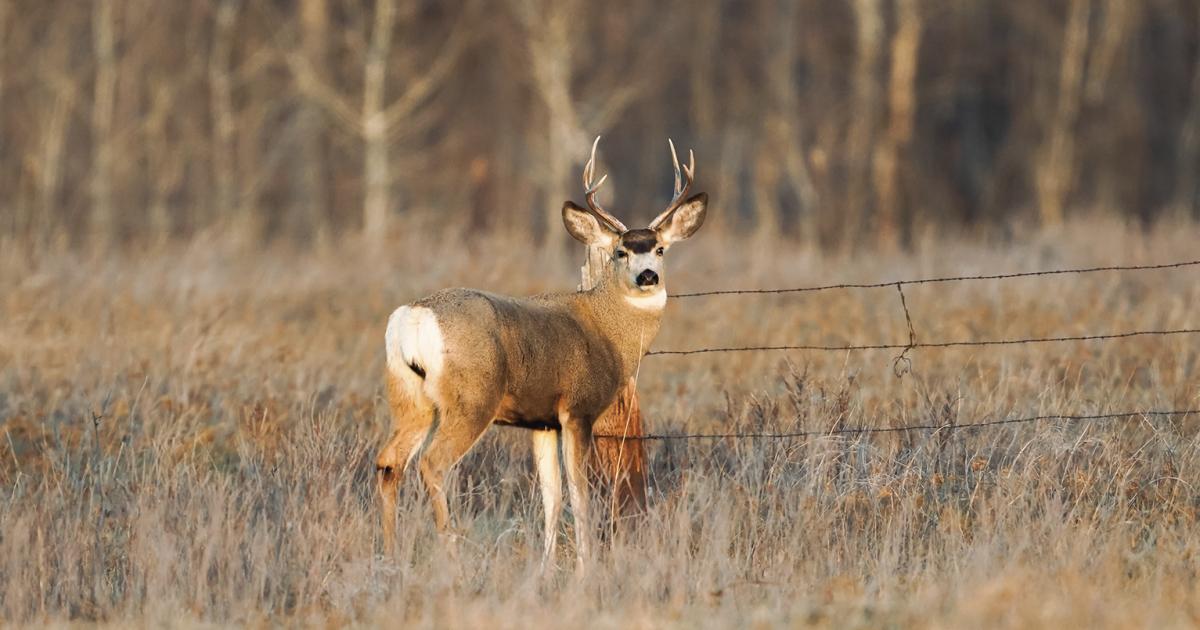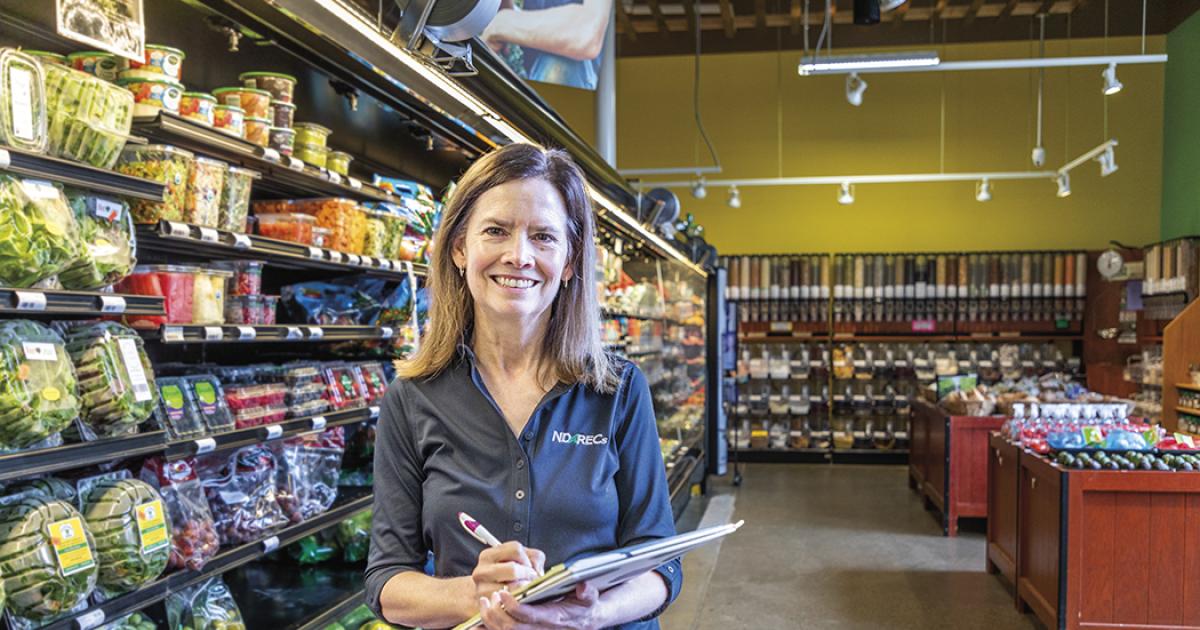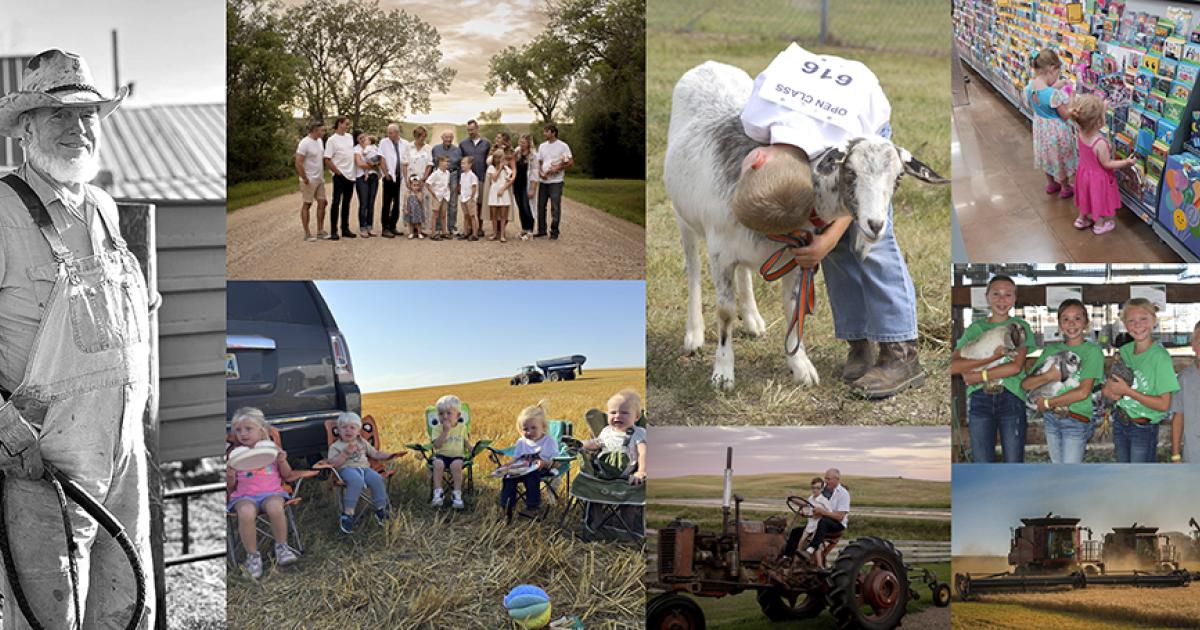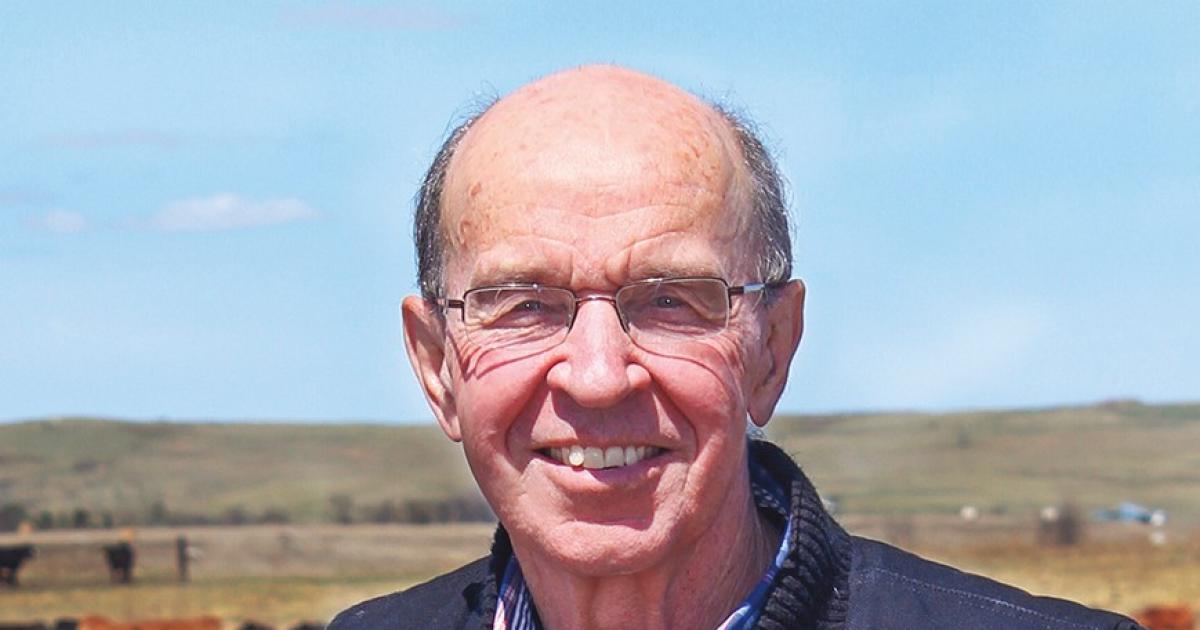Avery Roth will be the ag education teacher and FFA advisor at Grant County High School in Elgin under a permit program that allows community members to teach certain classes. Photo by Luann Dart
With a pervasive teacher shortage affecting North Dakota statewide, communities, schools and education professionals are carving out innovative solutions to ensure all students have access to high-quality teachers. North Dakota has developed a “grow your own” model to recruit and retain teachers, with a package of initiatives supported by the N.D. Department of Public Instruction (DPI).
A common theme among these programs is of communities looking to solve problems by looking inward.
Averting a crisis
With the school’s first day looming and the ag education program in jeopardy without a teacher, the Elgin/New Leipzig School District turned to a unique “grow your own” program, which allows community members to step into the classroom – without a degree, but with experience.
So, 20-year-old Avery Roth has been hired as the ag education teacher and FFA advisor by the district to teach at Grant County High School (GCHS) in Elgin.
While Roth does not have a teaching degree, he is filling the position with a permit from the N.D. Education Standards and Practices Board (NDESPB), which is responsible for teacher licensure.
Through the state program, teaching permits may be issued only in areas where documented shortages of regularly licensed teachers exist, as determined by the NDESPB. (Areas excluded from permits are elementary education, special education, mathematics, science, language arts and social studies.) The state board has declared all content areas as critical shortages for the 2023-24 school year.
The applicant must have proficiency and hold minimum qualifications of 4,000 hours over five years of relevant work experience in the subject area to be taught, or possess a certificate, license or degree in the subject area to be taught.
The teaching permit is issued for one year at a time for up to three years. Then, an individual may be granted teaching permits for four more years, up to a maximum of seven total years. But during those additional four years, the individual must be enrolled in a teacher education program. So, Roth will be contracted for a year, then can decide if he wants to continue with the program.
Roth is a 2021 graduate of Grant County High School and served in a state FFA leadership role after being elected as the 2021-22 North Dakota FFA vice president. He attended North Dakota State University for a year to study ag communications, then returned to the area to farm and ranch with his family.
Roth sees this as an opportunity to explore a career he’s thought about, so he can discover if it’s his true passion, without investing in four years of college first, he says.
“I think it’s an awesome opportunity, because ag education is something I have considered in the past and this gives me an opportunity to try it out and know if I like it, then I can keep doing it,” he says. “It really is a valuable program.”
Roth, who may be the youngest teacher in the state, will be mentored by a former ag education instructor, Pete Hetle, on a day-to-day basis, as well as a staff member at the school. He will also be enrolled in a state mentoring program, paired with another ag education teacher in the state, which is required for the permit program.
“I think the thing I’m most excited about is encouraging students to be involved, even just in the classroom,” Roth says. “I’m also excited because it’s going to be a lot of learning for me. There are skills I can get better at, too, as I’m teaching.”
Roth is also excited about leading the FFA chapter.
“Obviously, that’s a big passion of mine and I’m really excited to bring new energy to the chapter and into the classroom,” he says.
Roth served on an ag teacher recruitment and retention committee while serving as an FFA state officer, and understands the pitfalls.
“It is an overwhelming position, because there are so many responsibilities,” he says, which he believes affects retention.
“I’m just excited to have the opportunity to keep the program going, because it is a really good program and I'm excited to bring my experiences and just bring a new energy and excitement to the Grant County FFA chapter,” he says.
Data gathered by DPI during the last legislative session identified five “critical need” teaching positions in the state. Top on the list is K-12 special education teachers, with 74 unfilled positions, followed by career and technical education teachers, with 20 unfilled positions. Those are followed by fine and performing arts teachers, counselors and high school science teachers. Among those top five critical need areas, 129 positions were unfilled when the survey was completed.
North Dakota State University graduated only seven with an ag education degree.
The district had two other applicants for the position, both of whom accepted positions elsewhere, says E/NL Superintendent Russ Ziegler.
“We’ve been really brainstorming on who we can get,” Ziegler says.
Without this avenue, the school would have ended its ag education program.
“We were at the point, with registration coming, that we were going to get as many ITV courses, online courses as we could get, and I don’t know if we would have had any shop classes,” Ziegler says.
Schools must have an ag education program to have an FFA chapter. After three years without an ag education program, the school loses its FFA charter, Ziegler said, and GCHS has had a strong FFA program, sending numerous students to national competitions over the years.
During the last school year, NDESPB approved 26 permits in everything from music to ag education.
“I think we’ve come to a time where if there are any individuals out there who have work experience in an area and they want to try teaching, there’s a school looking for somebody in pretty much everything,” Ziegler says.
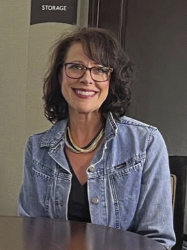
Coloring outside the lines
As a paraprofessional for the Wahpeton School District since 2020, Sally Sand discovered a passion for special education, so she’s entered a pipeline to gather 42 more college credits to become a special education technician.
“I decided to further my degree, because I had the opportunity, and the more education, the better, and the pay is better,” she says. “I fell in love with the kids and there’s a big gap in this kind of work, and the kids need it.”
With a family and job, she can get her additional requirements self-paced online.
“I’m working and learning at the same time,” she says. “I can still work and raise a family. … It’s helped me realize I can do this. I can have a career. You can find a passion later in life.”
The “grow your own” program that allows paraprofessionals to become special education technicians began with Katherine Terras, McVille, now co-founder and chief executive officer of Certification Central.
“It’s coloring outside the lines, while ensuring we’re still meeting standards of quality,” Terras says.
In 2019, Terras, who was a professor of special education and behavior analysis at the University of North Dakota (UND) at the time, was hearing from special education directors about the difficulty in retaining special education teachers who come into a community from the outside, especially in rural areas.
“But yet, there are these paraprofessionals who are staying in the community. They’re married to farmers, they’re place-bound or they grew up there. How can we invest in them?” she says.
So, Terras formed a task force in the fall of 2019 that included across-the-board representation to develop a pipeline to “grow our own” technicians in North Dakota.
Some 476 paraprofessionals responded to a survey, showing a large interest in a pipeline, but indicating barriers of time and money, Terras says.
An individual can become a paraprofessional with 15 hours of training and a high school diploma, while licensed teachers with a bachelor’s degree require 120 credits.
“That’s kind of daunting to go do that, because many of these paraprofessionals who are staying in their communities are parents,” Terras says. “So, we developed a mid-level position, thus the pipeline to become a special ed teacher.”
Criteria for a special education technician was proposed, and legislators who also served on the task force at the time, Sen. Erin Oban and Rep. Cynthia Schreiber-Beck, championed a bill to create that position in N.D. Century Code during the 67th legislative session in 2021.
“It’s pretty innovative, compared to what is happening in other states,” Terras says.
The special education technician requires 42 credits of specialized training, which can take from a year to 18 months to complete. A technician must be supervised by a special education teacher, who can be employed in another district, allowing districts to more easily fill required special education roles.
“A district can’t hire just a technician. They have to be supervised by a special education teacher,” Terras says, but the technician can complete the day-to-day work in the district.
Terras then left UND to create a program specifically for special education technicians, which currently has 43 enrollees.
“What used to be just special education shortages are now in every area,” Terras says. “So, the grow-your-own model is beyond special education. It may have originated there, but it is in every area and it’s expanding now to not just paraprofessionals, but how do we start recruiting our high school students into the field to get them inspired about being in education and then how do we start investing in them as juniors and seniors, so they will come back to the district and invest in their hometown?”
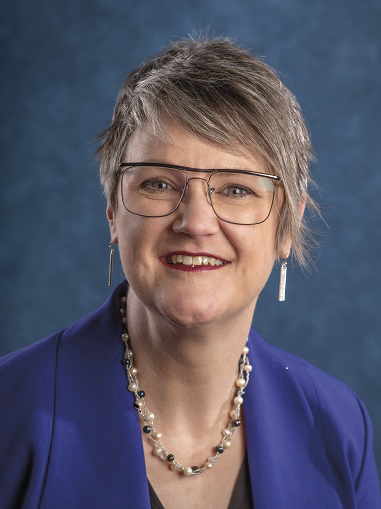
Growing your own
“The spirit of a grow-your-own program is to keep local talent local as much as we can,” says Meghan Salyers, an associate professor, director of student teaching and accreditation and the director of university assessment at the University of Mary.
A DPI program allows teacher candidates to remain in their home community and continue working in their school district to support themselves and their families, while getting their teaching degrees.
Funding through DPI provides grants to accredited institutions of higher education to assist paraprofessionals to become qualified teachers through June 2025.
Minot State University (MSU), the University of Mary (UMary) and Valley City State University have received funding to assist communities in filling teacher shortages.
MSU’s para-to-teacher pipeline offers an online bachelor of science degree to special education teachers, with scholarships available.
UMary offers online asynchronous “grow your own” degrees, along with scholarships, to help students become teachers while continuing to work in their communities.
“It allows those students to remain employed. And so, there’s immediate application in the schools where they’re employed,” Salyers says. “So, they can apply every ounce of what they're learning in that moment. … They are getting very quick responsive feedback and immediate application, so the quality remains high and the talent stays local.”
About a year into the UMary program, the online elementary education program has about 55 enrollees, and about 50 are in rural communities.
And North Dakota has now become the first state to obtain approval for including school administrators in a federally supported apprenticeship program. The program will offer important incentives, including training and financial support, for educators to get the academic credentials to work as school principals.
“Our North Dakota institutions are specifically designed to meet North Dakota specific communities,” Salyers says. “We've gone through enormously detailed program approval processes in our state to ensure high-quality preparation for teachers to teach children in our state.”
___
Luann Dart is a freelance writer and editor who lives in the Elgin area.


